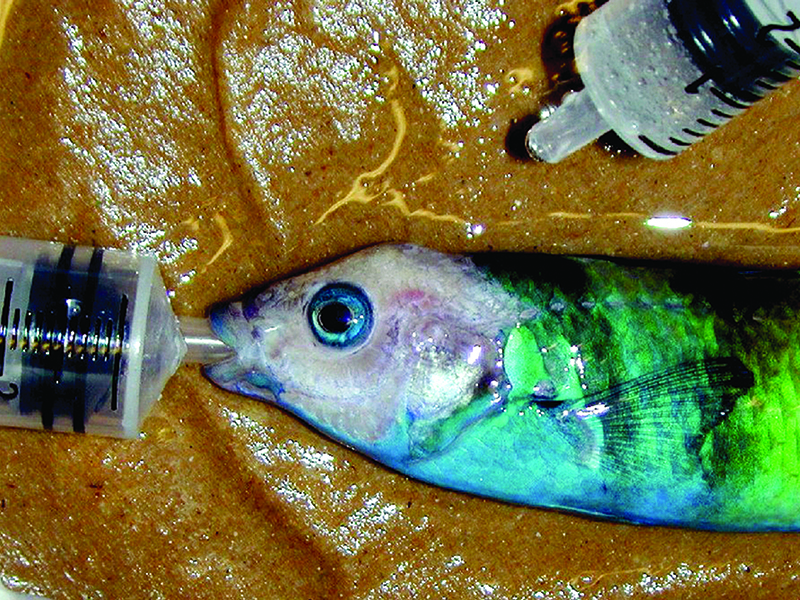Windows on Animal Health now open Tuesday and Wednesday afternoons
April 28, 2025

When’s the last time you watched a two-toed sloth have a physical? Or saw a tumor being removed from a copperhead? These are just a couple of the types of medical procedures that could be happening on any day at the Museum. Because along with housing enough live animals to be considered a mid-size zoo, the Museum also boasts a full-time veterinary staff dedicated to taking care of all its varied creatures.
Windows on Animal Health, located on the 2nd floor of the Nature Research Center, is the public-facing workspace where it all happens. The “Vet Window,” as it’s more commonly known, was purposely designed so visitors can view the daily activities in both the lab and the procedure room and ask questions about what they’re seeing. Starting at the end of April, the Window is open 1:30-3:30pm on Tuesdays and Wednesdays and showing the work of Chief Vet Dr. Dan Dombrowski, his staff and the students he mentors.
In addition to peering through the glass walled space, visitors can follow the action via a 52-inch video monitor mounted outside the Vet Window. The monitor enables them to see close-ups of microscopic images, physical exams and minor surgeries as they happen. A two-way audio system allows the staff and visitors to communicate with each other.
Visitors won’t lack variety in what they observe from day to day. Turtles, frogs, snakes, spiders, rodents, fish, the aforementioned sloth, a moray eel and even a millipede have all made it to the table at one time or another. Some of the more offbeat past procedures have included surgical removal of a tumor in a rat, a toe amputation on a bullfrog, and removal of a soft tissue mass from a fish’s mouth.
Besides providing quality health care for the resident creatures, the setting has provided unprecedented opportunities for the staff to discover novel things about unusual species and contribute to a vast body of research, even in the emerging field of invertebrate medicine.
By engaging the public directly in all these aspects, Dombrowski hopes to transform the unfamiliar into the relevant. “It’s all part of people being better informed about science,” he says.
For more information about our upcoming activities, conservation news and groundbreaking research, follow @NaturalSciences on Instagram and Facebook.

